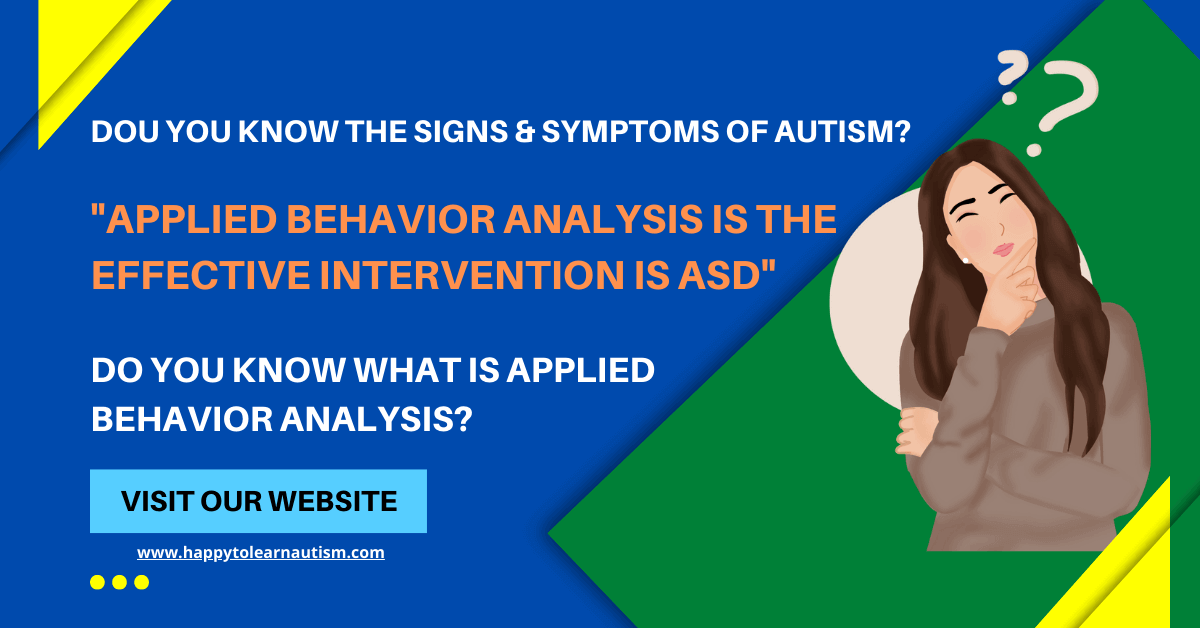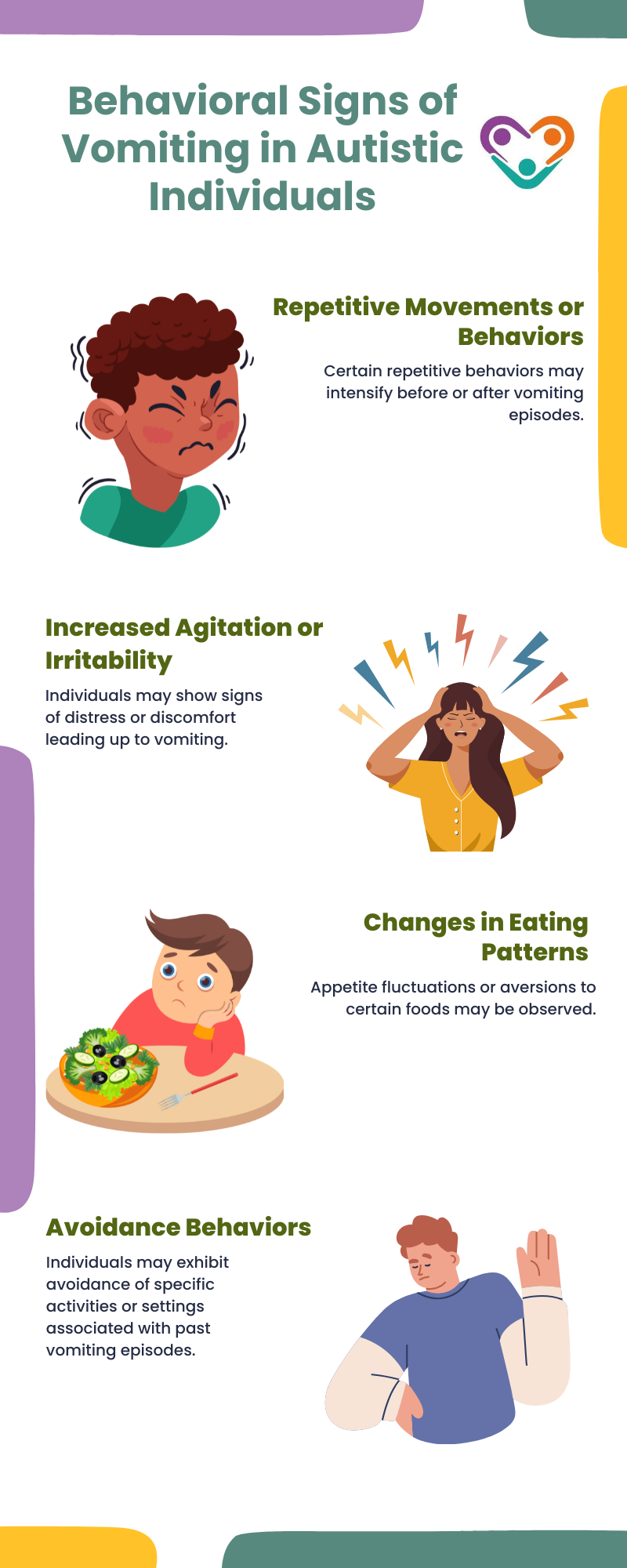Recognizing the Influence of Behavioral Autism on Every Day Life and Social Communications
You might not realize how deeply behavioral autism affects daily life and social communications. People on the range usually browse a globe loaded with interaction difficulties and sensory overload. These difficulties can bring about disappointment and isolation, influencing their relationships and general health. Recognizing these nuances is important for promoting encouraging atmospheres. What strategies can we apply to produce more comprehensive areas and meaningful connections? The answers could shock you.
Specifying Behavior Autism and Its Characteristics
Behavior autism, often referred to as autism range condition (ASD), includes a variety of problems characterized by challenges in social interaction, communication, and repeated habits. You may observe that people with ASD typically battle to interpret social cues, which can result in misconceptions in conversations. They may discover it hard to establish eye call or participate in tiny talk, making social scenarios feel overwhelming.
Communication troubles can materialize in numerous methods, from delayed speech development to a choice for utilizing fewer words. By identifying these attributes, you can cultivate a setting that advertises acceptance and motivates effective communication, assisting individuals with autism flourish in their daily interactions.
The Range of Autism: Recognizing Variability in Actions
Autism spectrum condition (ASD) isn't a one-size-fits-all diagnosis; it varies extensively among people. You may encounter individuals who are highly spoken and involve easily in conversations, while others might like singular activities or communicate non-verbally.
Additionally, the means people with ASD react to sensory input can vary considerably; some may be bewildered by loud sounds or bright lights, whereas others prosper in stimulating settings. The spectrum also includes distinctions in social communications; some individuals might have a hard time to analyze social signs, while others navigate social setups with family member ease. Comprehending this irregularity is necessary, as it helps you value each person's distinct experience and dressmaker assistance to their particular requirements, cultivating an extra inclusive setting for everybody.
Communication Obstacles Encountered by People With Autism
When you communicate with people on the autism range, you might see their distinct communication difficulties. They typically face difficulties with both nonverbal and spoken cues, which can impact their social interactions. Understanding these barriers is necessary for cultivating far better links and support.

Verbal Communication Troubles
Many people on the autism range experience spoken communication difficulties that can substantially affect their day-to-day communications. You may discover it testing to express your thoughts, feelings, or needs plainly. This can bring about frustration for both you and those around you, as misconceptions take place. You might have problem with starting conversations, maintaining a topic, or comprehending subtleties in speech. Typically, you could like utilizing basic language or repeated expressions, which can restrict your capacity to involve in deeper discussions. Your quantity, rate, or tone may not straighten with social expectations, creating others to misinterpret your intentions. Identifying these obstacles can help you and your support network develop methods to boost communication and promote much better connections with others in your every day life.
Nonverbal Communication Barriers
Spoken communication isn't the only difficulty individuals on the autism range face; nonverbal communication obstacles can be simply as substantial. These obstacles can lead to misconceptions or false impressions of social hints, making communications really feel confusing or frustrating. By addressing nonverbal communication, you can discover methods to enhance your social experiences and enhance your total quality of life.
Social Interaction Impacts
Social communications can usually feel overwhelming due to the one-of-a-kind communication obstacles dealt with by people with autism. You may have a hard time with analyzing social hints, making it difficult to comprehend sarcasm or body movement. This can cause misconceptions or uncomfortable moments in discussions. Additionally, starting and keeping conversations might really feel tough, triggering stress and anxiety in social circumstances. You might choose structured atmospheres, making spontaneous interactions uneasy. It's also usual to experience problem in engaging in little talk, which can prevent forming new friendships. Recognizing these difficulties can assist you locate strategies to enhance communication, such as practicing social skills in risk-free setups or making use of visual aids - Autism Spectrum Therapies. Understanding your demands permits you to navigate social communications with higher confidence and convenience.
Social Interaction and Partnership Structure in Autism
While structure partnerships can be testing for people with autism, comprehending their distinct perspectives and communication designs can promote significant connections. You could see that several individuals on the range choose direct communication helpful site and may battle with social cues or little talk. By being straightforward in your interactions, you can help produce an environment where they really feel comfy.
Engaging in shared interests can additionally offer as a bridge to deeper links. Whether it's a pastime, a favored show, or a shared enthusiasm, these common strings can open doors to friendship.
Every Day Life Routine: Browsing Obstacles and Techniques
Maneuvering daily life routines can be these details especially testing for people with autism, specifically when unforeseen changes happen. To browse these challenges, take into consideration carrying out aesthetic timetables or lists.
Establishing a regimen that consists of sensory breaks can additionally be helpful. This assists produce an understanding atmosphere.
Last but not least, practice mindfulness techniques to manage tension and anxiousness. Simple breathing workouts or basing strategies can make a substantial difference. By including these methods, you can enhance your everyday regimen and lessen interruptions, making life feel extra manageable.
Staminas and Capabilities of Individuals on the Autism Range
Comprehending daily life routines is just one aspect of the autism experience. Lots of people on the autism spectrum possess impressive toughness and capabilities that set them apart.
Furthermore, your memory abilities often shine, specifically in locations of passion. Autism Behavioral Therapy. This knack for retaining info can make you a beneficial resource in areas like art, science, or innovation. You might likewise show solid aesthetic reasoning, enabling you to envision complex concepts and resolve issues creatively
In addition, your unique perspective on the globe can cultivate compassion and understanding in others, enriching social communications. Accepting these strengths not only enhances your self-confidence yet additionally aids others appreciate the diverse abilities you give the table.
Producing Comprehensive Settings for Individuals With Autism
Creating comprehensive environments for individuals with autism begins with making sensory-friendly areas that cater to their one-of-a-kind demands. You can also promote chances for social interaction, helping to construct links and relationships. By making these changes, you'll contribute to an extra inviting ambience for everyone.
Creating Sensory-Friendly Spaces
While designing sensory-friendly areas, it's important to review the special requirements of individuals with autism. Beginning by picking calming colors and soft lights to produce a soothing environment. Include peaceful zones where individuals can reenergize and retreat when overwhelmed. You'll intend to minimize loud sounds and interruptions, utilizing soundproof products or white sound machines to aid preserve peace. Take into consideration responsive components like soft fabrics or fidget-friendly things that can provide convenience. Determine that rooms are adaptable, enabling simple rearrangement to suit various tasks. Include aesthetic timetables or clear signs to assist individuals navigate the space confidently. By attentively integrating these components, you can create an inviting environment that supports sensory needs and see promotes overall health.
Promoting Social Interaction Opportunities
Designing sensory-friendly spaces not only addresses specific convenience but also sets the phase for significant social interactions amongst individuals with autism. Urge peer mentoring, pairing individuals with autism with encouraging peers that can assist them via social situations. By implementing these strategies, you can boost social opportunities, aiding individuals with autism build relationships and enhance their social skills in a risk-free, welcoming setting.

Often Asked Concerns
Exactly How Can Friends Assistance Someone With Behavioral Autism?
You can support a friend with behavioral autism by being patient, listening actively, and valuing their borders. Take part in tasks they enjoy, connect freely, and develop a comfy atmosphere where they feel valued and recognized.
What Resources Are Readily Available for Parents of Children With Autism?
You can explore various resources for moms and dads of children with autism, including support system, academic sites, and neighborhood neighborhood services. Getting in touch with various other parents can likewise provide beneficial understandings and shared experiences to assist browse difficulties.
Can Behavioral Autism Modification Gradually?

Yes, behavioral autism can change in time. You might notice shifts in communication, social skills, and actions as your child expands. Early intervention and assistance frequently play important functions in these developmental adjustments.
Just How Do Sensory Sensitivities Affect Day-to-day Live?
Sensory sensitivities can make everyday experiences frustrating. You may deal with loud noises or bright lights, resulting in stress and anxiety or evasion. Discovering environments that fit your requirements can greatly enhance your convenience and overall life.
What Are Common Misconceptions Concerning Behavioral Autism?
You might believe behavior autism only impacts interaction abilities, yet it's even more complex. Many assume people lack empathy or knowledge, which isn't true. Comprehending these mistaken beliefs aids foster acceptance and assistance for those on the spectrum.
Behavior autism, often referred to as autism spectrum disorder (ASD), includes a variety of conditions characterized by obstacles in social interaction, communication, and repetitive behaviors.Social communications can typically really feel frustrating due to the unique communication challenges faced by individuals with autism.Designing sensory-friendly areas not just addresses private comfort however additionally establishes the phase for significant social interactions among people with autism. Motivate peer mentoring, combining people with autism with supportive peers who can guide them with social scenarios. By applying these techniques, you can boost social possibilities, helping people with autism construct relationships and reinforce their social abilities in a secure, inviting setting.